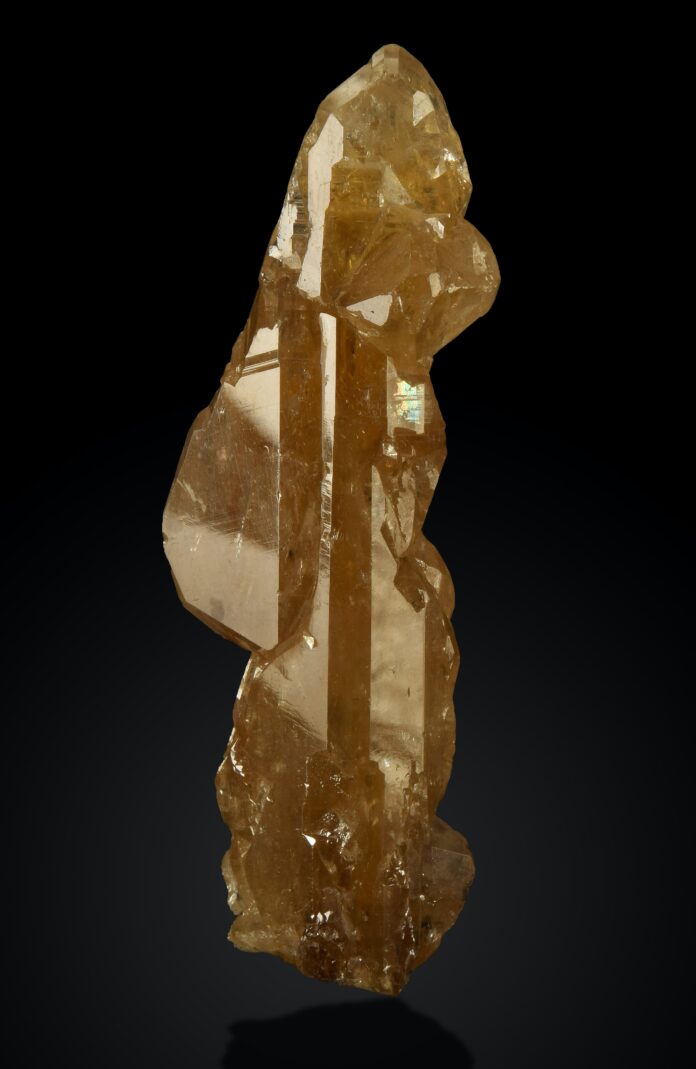Nestled among the elements on the periodic table, boron emerges as a modest yet indispensable player in the realm of chemistry, materials science, and even biology. With an atomic number of 5 and a place within the group 13 elements, boron’s unassuming nature belies its diverse applications and profound impact on various facets of human knowledge and technology. From its role in strengthening materials to its involvement in plant growth, boron’s elemental intricacies continue to captivate scientists, engineers, and researchers alike.
Boron, symbolized as “B” on the periodic table, boasts a unique position within the realm of elements. Its atomic structure, characterized by five protons and five electrons, places it in the boron group alongside aluminum, gallium, indium, and thallium. While it might not share the same household name recognition as elements like carbon or oxygen, boron’s influence spans a wide spectrum of fields, owing to its distinctive properties and behavior.
One of boron’s most notable attributes is its versatility as a dopant in semiconductors. By introducing small amounts of boron into silicon crystals, researchers can alter the electrical properties of the resulting material. This process, known as doping, is instrumental in the creation of electronic devices such as transistors and diodes. Boron’s ability to introduce “holes” or positively charged vacancies in the crystal lattice of semiconductors plays a pivotal role in controlling the flow of electric current. As a result, the incorporation of boron allows for the development of intricate circuits and the functioning of the digital world.
Beyond the realm of electronics, boron’s influence extends to materials science, where its incorporation lends strength and durability. Boron compounds are commonly utilized in the production of high-strength, lightweight materials such as boron fibers and boron carbide. The latter is renowned for its exceptional hardness, making it a key component in armor plating and cutting tools. Moreover, boron’s affinity for forming covalent bonds contributes to the robustness of composite materials used in aerospace applications, offering a blend of resilience and low weight that’s essential for space exploration and aviation.
The world of chemistry also witnesses the interplay of boron’s properties in its diverse compounds. Boron’s Lewis acidity, a measure of its electron-accepting tendencies, renders it a versatile candidate for catalysts in chemical reactions. Boron-based catalysts have found utility in a variety of processes, including hydroboration and polymerization. These applications not only offer efficient routes to synthesizing important compounds but also provide insight into boron’s catalytic role in shaping molecular transformations.
Interestingly, boron’s influence extends even to the realm of health and biology. In trace amounts, boron is an essential micronutrient for both plants and animals. It participates in the cross-linking of cell walls in plants, contributing to structural integrity and growth. In humans, boron is believed to play a role in bone health by aiding in the metabolism of calcium, magnesium, and other minerals. While the precise mechanisms remain the subject of ongoing research, boron’s multifaceted impact on living organisms underscores the interconnectedness of the elements within the biological world.
Boron’s elemental complexities come to the fore in the synthesis of boranes, compounds comprised solely of boron and hydrogen atoms. These compounds exhibit diverse geometries and properties, ranging from stable molecules to reactive intermediates in chemical reactions. Their applications range from fuel cells to pharmaceuticals, showcasing boron’s ability to adapt and contribute to solutions across different scientific disciplines.
Boron’s presence also leaves its mark on Earth’s geological processes. Boron compounds, carried by rivers and dissolved in water, contribute to the formation of minerals and rocks. Borate minerals, such as borax and colemanite, are often found in arid regions and have historical significance due to their use in various industrial applications, including the manufacture of glass and ceramics. Boron’s incorporation into Earth’s geological tapestry offers a reminder of its widespread presence and impact, even beyond the confines of laboratories and research settings.
In conclusion, boron stands as a testament to the diverse possibilities that emerge from the properties of individual elements. From its contributions to electronics and materials science to its essential role in plant growth and its complex chemistry, boron’s significance reverberates across scientific disciplines. Its unassuming atomic structure belies a world of potential and application, showcasing the intricate interplay of nature’s building blocks. As scientific exploration continues, the elemental intricacies of boron continue to unfold, inspiring innovation and enriching our understanding of the fundamental elements that shape our world.
Versatile Semiconductor Dopant:
Boron’s ability to serve as a dopant in semiconductors enables the manipulation of electrical properties in electronic devices, contributing to the development of transistors and diodes.
Strength and Durability in Materials:
Boron compounds play a vital role in producing high-strength, lightweight materials like boron fibers and boron carbide, known for their durability and hardness in applications such as armor plating and cutting tools.
Catalytic Potential:
Boron’s Lewis acidity makes it a versatile candidate for catalysts in chemical reactions, with applications ranging from hydroboration to polymerization, facilitating efficient synthesis of important compounds.
Essential Micronutrient:
In trace amounts, boron is an essential micronutrient for both plants and animals, contributing to the structural integrity of plant cell walls and potentially influencing bone health in humans.
Geological Significance:
Boron compounds participate in Earth’s geological processes, contributing to the formation of minerals and rocks. Borate minerals have historical and industrial importance, finding use in glass and ceramics manufacturing.
Boron’s presence on the periodic table paints a picture of elemental diversity and versatility. It stands as an unassuming yet integral member of the boron group, characterized by its unique properties and its impact across various scientific domains. While it might lack the household recognition of elements like gold or oxygen, boron’s role in shaping our technological landscape and understanding of the natural world is far from insignificant.
At the heart of boron’s elemental identity lies its atomic structure. Comprising five protons and five electrons, it sits comfortably within the boron group alongside its congeners, each element presenting its own distinct attributes. Boron’s position provides it with a vantage point to influence chemical and physical phenomena, from its interactions in compounds to its involvement in biological processes.
The world of technology owes a debt to boron’s pivotal role in electronics. Through the process of doping, wherein minute quantities of specific elements are introduced into semiconductors, boron imbues silicon crystals with altered electrical properties. This orchestrated manipulation of electrons and “holes” within the semiconductor lattice forms the basis of countless electronic devices. As transistors flicker to life and diodes conduct in one direction, boron remains the unassuming architect of this orchestrated dance of charge.
In the realm of materials science, boron takes on the persona of a structural engineer. Its compounds are often harnessed to bolster materials with strength and resilience. Think of boron fibers, lightweight and robust, woven into materials that withstand tremendous forces while remaining feather-light. Boron carbide, known for its exceptional hardness, joins the fray as armor plating and cutting tool components. The aerospace industry benefits from boron’s bonding prowess, as its covalent connections contribute to the construction of high-performance composite materials, essential for aviation and space exploration.
The allure of boron’s chemistry extends beyond material reinforcement. Its affinity for forming covalent bonds and engaging in unique molecular interactions propels it into the realm of catalysis. Boron-based catalysts act as conductors of chemical symphonies, orchestrating reactions that might otherwise remain sluggish or unattainable. Hydroboration reactions, for instance, find their rhythm under the guidance of boron catalysts, forging new paths in organic synthesis. As chemists embrace these catalysts, boron’s role as an enabler of molecular transformation becomes increasingly apparent.
Beyond the confines of laboratories and industrial settings, boron extends its influence to the realm of biology. In trace amounts, it dances along the delicate balance of essentiality. For plants, boron is a facilitator of structural integrity, participating in the cross-linking of cell walls that define their form and growth. This quiet collaboration goes unnoticed as plants stretch toward the sun, drawing life from the soil. In humans, boron’s potential role in bone health is a subject of exploration. As it intertwines with calcium, magnesium, and other minerals, its presence in trace amounts beckons researchers to uncover the nuances of its impact on our skeletal framework.
The synthesis of boranes introduces us to the intricate ballet of boron atoms. These compounds, composed solely of boron and hydrogen, showcase an array of geometries and reactivity profiles. As fuel cells strive to redefine energy sources and pharmaceuticals seek new frontiers, boranes emerge as promising participants in these arenas. Boron’s adaptability becomes evident as it slips seamlessly from one application to another, leaving its mark on solutions to diverse scientific challenges.
Geological narratives find room for boron’s tale within Earth’s tapestry. As rivers meander and water courses through the landscape, they carry with them boron compounds that contribute to the formation of minerals and rocks. Borate minerals, like borax, conjure images of historical significance intertwined with industrial utility. These compounds, tucked away in the arid corners of the planet, serve as relics of Earth’s geological story, bearing testament to boron’s widespread distribution and its impact on the natural world.
In the grand tapestry of the universe, boron represents an element of intrigue and significance. Its unassuming atomic structure belies a world of possibilities, from its orchestration of electronic behavior to its strengthening of materials. It embraces its role as a catalyst and an enabler of chemical transformations, while also influencing the growth of plants and potentially contributing to human health. Boron’s contributions span the spectrum, from cutting-edge technologies to fundamental biological processes, leaving an indelible mark on the realms it touches. As scientists continue to unravel the mysteries of this unassuming element, they unveil a tale of diversity, adaptability, and elemental complexity that reverberates through the ages.














